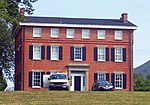Hudson Highlands State Park

Hudson Highlands State Park is a non-contiguous state park in the U.S. state of New York, located on the east side of the Hudson River. The park runs from Peekskill in Westchester County, through Putnam County, to Beacon in Dutchess County, in the eastern section of the Hudson Highlands. The park's lands, heavily mined, logged and quarried in the past, were assembled over the mid-20th century from different purchases by the state, totaling 7,669 acres (31.04 km2; 11.98 sq mi) as of 2014. They range from riverside salt marshes to mountain summits, including the highest in the Highlands, the 1,610-foot (490 m) south summit of Beacon Mountain. It is managed by the New York State Office of Parks, Recreation and Historic Preservation (NYSOPRHP) from offices at Fahnestock State Park to the east. Its parcels adjoin others owned by other public agencies and private preserves, some of which are managed by NYSOPRHP as well and are open to the public. Due to its panoramic views of the river and mountains, and easy access by both automobile and rail, it has become a very popular destination for day hikes. The park's best known trail makes a steep, rocky ascent up Breakneck Ridge. Other trails climb neighboring Bull Hill and follow the cliffs of Anthony's Nose. The Appalachian Trail (AT) also goes through the southeast corner of the park.
Excerpt from the Wikipedia article Hudson Highlands State Park (License: CC BY-SA 3.0, Authors, Images).Hudson Highlands State Park
Lake Surprise Road,
Geographical coordinates (GPS) Address Nearby Places Show on map
Geographical coordinates (GPS)
| Latitude | Longitude |
|---|---|
| N 41.458611111111 ° | E -73.959722222222 ° |
Address
Lake Surprise Road
Lake Surprise Road
10516
New York, United States
Open on Google Maps










